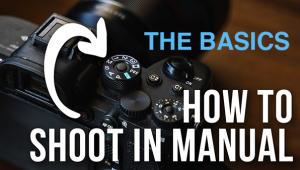Shutter Lag
![]()
Shutter Lag
Or, Why We Don't Review Digicams
by George Schaub
We have gotten some letters from readers asking why we don't normally review integral lens digital cameras, or what we call digicams. One reason is that they come and go so quickly. It's not unusual for a digicam to be on the market for four to six months, tops. Another is that there are hundreds of them, with perhaps 15 or more in every manufacturers lineup. Frankly, we feel that we want to dedicate our magazine pages to techniques to help improve image quality and tools that will stay in circulation more than a few months, rather than those that are around until the next blip in megapixel count or the latest wrinkle in face recognition software. But the main culprit is in a not so attractive attribute of the vast majority of these cameras--shutter lag.
If you have shot with a digicam you are way too familiar with shutter lag. This once obscure term was fully investigated by Norman Goldberg of Popular Photography back in the mid-nineteen eighties. As a neophyte in the trade press in those days I had the assignment to edit Norman's regular column in Pop, and he did go on and on about shutter lag. In those days the issue was autofocus acquisition time in the then-new AF-SLRs. He set up all sorts of measuring devices to calculate the difference in time between when the photographer pressed the button and when the exposure was actually made. And the first bunch of AF-SLRs were just as deficient in this regard as today's point and shoot digicams.
While Norman's tests and reporting were laudatory, his prose style, to be kind, could be excruciating, at least in what it demanded from the reader. But he definitely nailed it on the head. His question was--why should a photographer accept a camera that didn't deliver the image when requested? Those who shot rangefinder cameras never experienced this; manual focus SLR cameras had delays caused more by photographers trying to nail focus than by any fault of the camera itself. True, manual focus SLRs did have some delay, but it was negligible.
Field tests verified all this. At one PMA a camera maker claimed to then editor Sean Callahan that their AF-SLR was a match for sports, and that their follow focus setup could handle any assignment. So Callahan duly sent me and then Sports Illustrated photographer Richard Mackson to a UNLV basketball game to check it out. Mackson worked with the camera for about five minutes and requested that I place it between my forefinger and toe so that he could give it a field goal kick into the stands. In short, we've been down this road before.
But all that got sorted out as manufacturers recognized that no photographer worth his or her salt would put up with a camera that got in the way of capturing the moment. And today pros and amateurs don't even think twice about working with AF-SLRs. Indeed, manual focus seems to have become almost vestigial, and you get blank looks when you suggest they try that focusing mode.
But digicams have yet to beat this bugaboo. And lord knows I've tried to bypass it, even resorting to continuous shooting in Sports Scene mode in the hopes of snagging just one shot in a sequence of events that captured the moment I wanted. I recently photographed a child doing jump rope in that fashion and never caught the kid at the peak of the action, something I could get in one or two shots with even a budget DSLR.
Just what is the problem? It's a combination of processor and system function, which actually is one in the same thing. You can trace the problem by looking at the solution posed by manufacturers. Most recommend that the user cut down lag times by depressing the shutter slightly to activate autoexposure and autofocus before they make the shot. This can help, but what happens if the subject moves (read kids, or kid sports) or the light changes? Recently I was photographing a soccer match with a high end point and shoot and trying to follow one child down the field. Needless to say that caused all sorts of delay with the camera. It was more like getting an approximation of the moment than the moment itself.
The problem is compounded by the viewfinder, or lack of same, in most digicams. Now that designs are favoring large screens for replay (the virtual brag book) there is either no viewfinder or one so small that it's like looking through a pinhole. These big viewfinders are impressive, and makers shout from the roof tops when the display gains ½ an inch on the diagonal. But that doesn't help when the sun is bright, making the display screen on most virtually unreadable. So not only do we have shutter lag, we also have the inability to actually see what we are actually photographing. Perhaps we need to start selling a black viewing cloth to place over our heads when shooting in bright sunlight with these cameras. Holding a camera at arm's length has become the new shooting pose, which plays havoc not only with being able to read the scene but also keeping the camera steady. Yes, products like those sold by Hoodman can help, but the answer is in not trying to put a bandage over the problem but getting to its root cause.
There's no doubt that there's some exciting new technology in today's digicams. Face detection is one attempt to bypass the lack of readability of the screen (even though we might not be able to see the expression on that face in bright light that's now in sharp focus.) And there's more to come, such as Kodak's recent unveiling of a new sensor pattern that, according to images I've seen, enhances image quality at all ISO settings, and particularly at higher ISOs. In-camera image fixes are coming on board as well, with processors eliminating red-eye, poor exposures and even offering image overlays. Those achievements should be cheered as amazing advances in photography.
But I gotta' tell ya', all of that doesn't mean a hill of beans until the 800 pound gorilla in the room, shutter lag, has been addressed. It is the number one complaint of digital camera buyers, and perhaps the number one reason why we're going to see even more in the budget DSLR class. I suggest that all simply Google "shutter lag" and see what comes up. You'll see actual shutter lag tests of dozens of cameras (Norman Goldberg would smile, though many are specious as there are so many variables that have been nulled out by the testers) and scathing criticisms about cameras that look and feel great but simply can't deliver the goods.
While we all would love to have a compact, slim and fashionable camera to carry around as a photographic traveling companion, those who have experienced the disappointment of shutter lag feel like that have a great looking watch that simply can't keep time.
- Log in or register to post comments












































